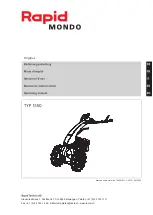
17
Scan Types
Full Scan Q1 and Q3 Scan Types
Thermo Scientific
TSQ Altis, Quantis, and Fortis Hardware Manual
73
Full Scan Q1 and Q3 Scan Types
The full scan Q1 and Q3 scan types perform only one stage of mass analysis. The mass
spectrum obtained is equivalent to the mass spectrum obtained from an instrument with a
single mass analyzer. In the one stage of analysis, the ion source forms ions that enter the
analyzer assembly. One of the mass analyzers (Q1 or Q3) is scanned to obtain a complete mass
spectrum. The other rod assemblies (Q2 and Q3, or Q1 and Q2, respectively) act as ion
transmission devices. The full scan Q1 scan type uses Q1 as the mass analyzer; the full scan
Q3 scan type uses Q3 as the mass analyzer.
Use
experiments to determine or confirm the
m/z
(identity) of unknown
compounds or the
m/z
of each component in a mixture of unknown compounds. (Generally,
you need a full mass spectrum to determine the
m/z
of an unknown compound.)
The full scan gives you more information about an analyte than does the
, but a full scan does not yield the sensitivity that the other two
scan types can achieve. This scan type requires less time monitoring the signal for each ion
than in the
selected reaction monitoring (SRM) scan type
or SIM. Full scan provides greater
information but lower sensitivity than the other two scan types.
Before you perform a SIM or an SRM experiment, you must know what ions or reactions you
are looking for. Therefore, you might use a full scan for SIM to determine the identity of an
analyte and to obtain its mass spectrum, and a full scan for SRM to determine the mass
spectrum and product mass spectra for precursor ions of interest. Then, you might use SIM or
SRM to do routine quantitative analysis of the compound.
Selected Ion Monitoring Scan Type
Selected ion monitoring (SIM) monitors a particular ion or set of ions. You can use SIM
experiments to detect small quantities of a target compound in a complex mixture when you
know the
m/z
of the target compound. Therefore, SIM is useful in trace analysis and in the
rapid screening of a large number of samples for a target compound.
Because SIM monitors only a few ions, it can provide lower detection limits and greater speed
than the full-scan modes. SIM achieves lower detection limits because more time is spent
monitoring significant ions that are known to occur in the mass spectrum of the target
analyte. SIM can achieve greater speed because it monitors only a few ions of interest; it does
not monitor regions of the spectrum that are empty or have no ions of interest.
SIM can improve the detection limit and decrease analysis time, but it can also reduce
specificity. Because SIM monitors only specific ions, any compound that fragments to
produce those ions will appear to be the target compound, which can result in a false positive.
c
Set to pass ions of a single
m/z
or a set of
m/z
values.
d
Collisions with argon gas cause ions to fragment.
Содержание TSQ Altis
Страница 1: ...TSQ Series II TSQ Altis TSQ Quantis and TSQ Fortis Hardware Manual 80111 97047 Revision A June 2018 ...
Страница 6: ......
Страница 12: ...Contents xii TSQ Altis Quantis and Fortis Hardware Manual Thermo Scientific ...
Страница 22: ...1 Introduction MS Mass To Charge Ratio Ranges 4 TSQ Altis Quantis and Fortis Hardware Manual Thermo Scientific ...
Страница 32: ...3 Vacuum System Vacuum Gauges 14 TSQ Altis Quantis and Fortis Hardware Manual Thermo Scientific ...
Страница 172: ...G 154 TSQ Altis Quantis and Fortis Hardware Manual Thermo Scientific ...
















































